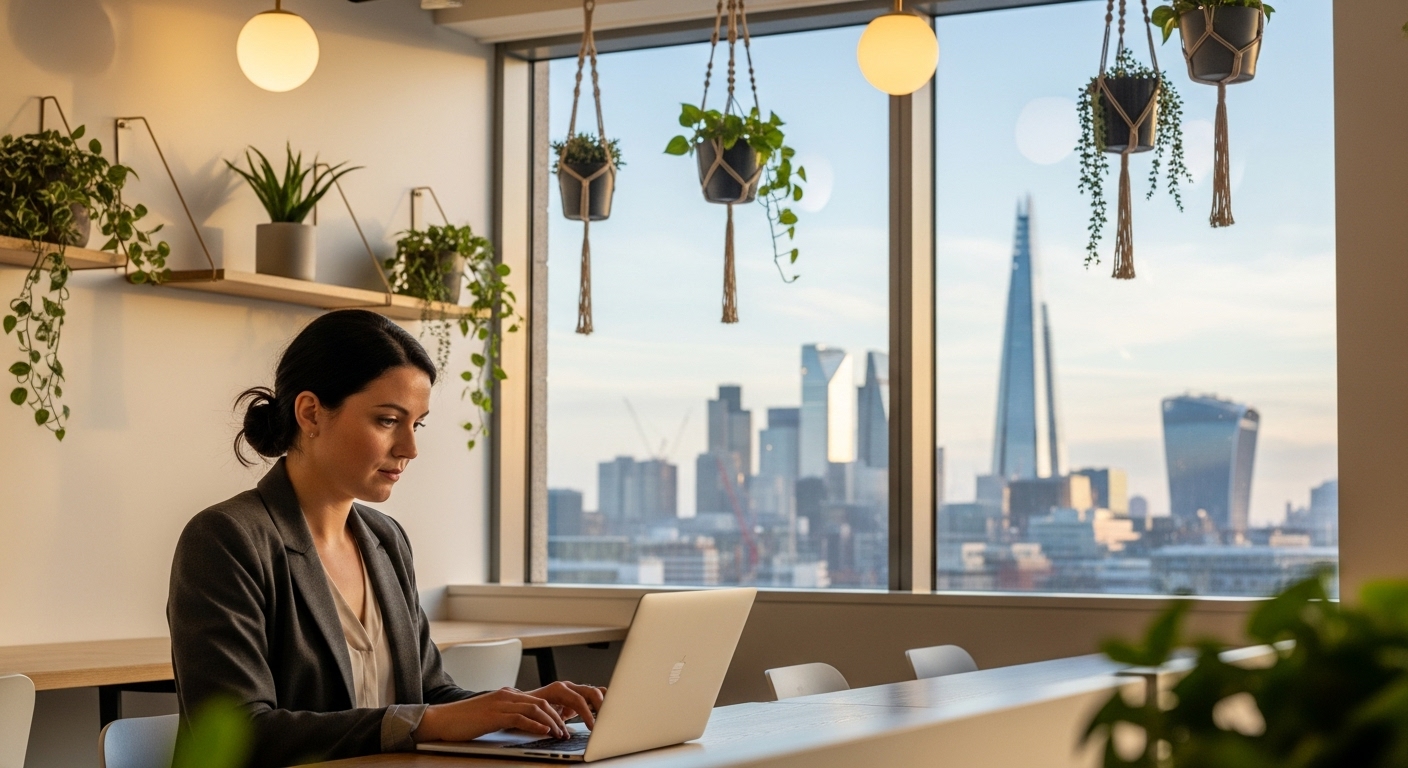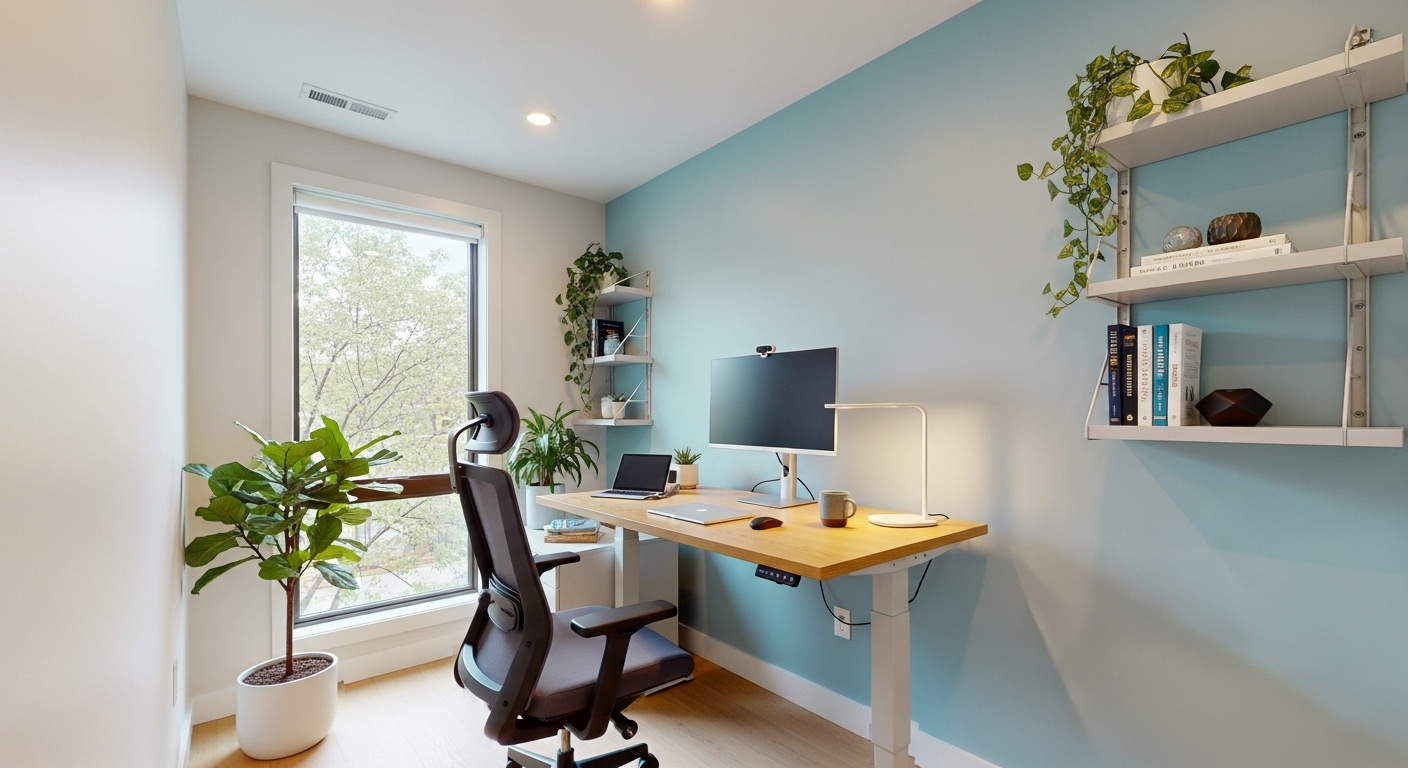In the relentless hum of the global business world, maintaining peak productivity is no longer a luxury but a necessity. For the modern professional, the rise of coworking spaces has reshaped the workday, offering flexibility and community but also presenting unique challenges to deep, focused work. These shared environments are vibrant ecosystems of innovation and collaboration, yet their inherent energy can easily become a source of distraction. This guide is designed to help you navigate this dynamic landscape, offering a structured framework to harness the benefits of shared workspaces while mitigating their pitfalls. We will explore actionable strategies for curating your environment, leveraging technology, managing your energy, and building resilient routines. By mastering the rhythm of your day, you can transform a bustling coworking hub into a personal powerhouse of productivity, turning potential chaos into a catalyst for your best work. This isn’t just about getting more done; it’s about working smarter and more intentionally in the new frontier of professional life.
Establishing your productivity baseline
Before you can optimize your productivity, you must first understand it. Entering a coworking space without a clear plan is like setting sail without a compass; you’ll be active, but not necessarily effective. The first step is to establish a personal productivity baseline. This begins with defining clear, measurable goals for each day and week. Instead of a vague to-do list, use a framework like SMART (Specific, Measurable, Achievable, Relevant, Time-bound) goals to create clarity and direction. For instance, ‘write report’ becomes ‘complete the Q3 financial analysis section of the report by 2 PM’. This specificity eliminates ambiguity and provides a clear target. Once goals are set, structure your day using time-blocking. Allocate specific blocks of time to specific tasks, treating these appointments with yourself as seriously as you would a client meeting. This method combats multitasking and forces single-minded focus. A popular complementary technique is the Pomodoro Method: work in focused 25-minute intervals, followed by a 5-minute break. After four ‘pomodoros,’ take a longer 15-30 minute break. This rhythm prevents burnout and helps maintain high energy levels throughout the day. The key is to experiment with these frameworks and find the cadence that works for you. Track your output and energy levels for a week to identify your most productive hours and common time-wasting triggers. This data-driven self-awareness is the foundation upon which all other productivity strategies are built, allowing you to create a personalized system that thrives within the shared office environment.
Curating your environment for deep work
Your physical environment has a profound impact on your ability to concentrate. While you can’t control every aspect of a shared office, you can strategically curate your personal bubble to foster deep work. The process starts with selection. Don’t just take the first available desk. Observe the flow of the space. Is there a quieter corner away from the high-traffic kitchen and reception areas? Does a desk near a window with natural light boost your mood and energy? Many premier coworking spaces in London are now designed with productivity zones in mind, offering a mix of collaborative open areas, quiet zones, and private phone booths. Make full use of these facilities, moving between them based on the task at hand. Once you’ve chosen your spot, it’s time to fortify it. A high-quality pair of noise-canceling headphones is non-negotiable. They are the single most effective tool for blocking out ambient chatter and creating a focused auditory environment. Signal your need for concentration non-verbally; headphones often serve as a universal ‘do not disturb’ sign. You can also use physical cues, like a small, unobtrusive desk sign, to let colleagues know when you are in a deep work session. Keep your personal workspace organized and clutter-free. A tidy desk promotes a tidy mind, reducing visual distractions that can pull your attention away from the task at hand. By consciously shaping your micro-environment, you reclaim control and create a sanctuary for focus amidst the collective buzz.
Leveraging technology and digital tools
In the modern professional’s arsenal, technology is a powerful double-edged sword. It can be a gateway to endless distraction or a formidable tool for enhancing focus and efficiency. The key is to be a master of your digital toolkit, not a servant to its notifications. Start by conducting an audit of your current apps and software. For task management, platforms like Asana, Trello, or Monday.com can help you visualize workflows and track progress on complex projects. For communication, while Slack and Microsoft Teams are essential for collaboration, it’s crucial to manage their intrusiveness. Turn off non-essential notifications, use status updates to signal when you’re in deep work, and schedule specific times to check messages rather than reacting to them in real-time. To actively combat digital distractions, consider focus-enhancing applications. Tools like Freedom or Cold Turkey can block distracting websites and apps for set periods, creating an impenetrable digital fortress for your attention. Meanwhile, apps like Forest gamify the process of staying off your phone by growing a virtual tree during periods of focus. Your digital workspace should be as intentionally designed as your physical one. Organize your computer’s desktop, use a logical folder structure for files, and close all unnecessary tabs before starting a new task. By strategically deploying these digital tools, you can automate organizational tasks, minimize digital noise, and create an online environment that supports, rather than sabotages, your productivity goals.
The art of strategic socializing and networking
One of the primary draws of a coworking space is the built-in community. The opportunity to connect with a diverse group of professionals can lead to new ideas, collaborations, and friendships. However, this social element can also be a significant productivity drain if not managed strategically. The goal is to engage with the community on your own terms, transforming potential distractions into valuable, scheduled interactions. Avoid the temptation of spontaneous, lengthy conversations when you’re in the middle of a focused task. Instead, be intentional about your social time. Use your scheduled breaks—like the longer break after four Pomodoro sessions—to grab a coffee from the communal kitchen and chat with fellow members. This compartmentalizes socializing and makes it a rewarding part of your routine rather than an interruption. Furthermore, leverage the formal networking opportunities provided by the coworking space. Most hubs host regular events, from breakfast mixers and lunch-and-learns to evening social gatherings. Mark these on your calendar and treat them as dedicated networking time. This allows you to reap the community benefits in a structured way that doesn’t conflict with your work schedule. When you are at your desk, learn the art of the polite but firm boundary. If someone approaches you while you’re clearly focused, you can say, ‘I’d love to catch up, but I’m in the middle of something right now. Can I find you around lunchtime?’ This acknowledges the person while protecting your workflow. By treating networking as a deliberate activity, you can build meaningful connections without sacrificing your daily output.
Managing energy, not just time
Productivity is not just a function of how you manage your 24 hours; it’s fundamentally about how you manage your energy within those hours. High performers understand that focus and creativity are finite resources that need to be actively replenished. A coworking space, with its various amenities, can be an excellent environment for practicing effective energy management. Start by recognizing your natural ultradian rhythms—the 90-120 minute cycles of high-frequency brain activity followed by a period of lower frequency. Align your deep work sessions with these high-energy peaks and use the troughs for less demanding tasks or, better yet, for deliberate rest. A short walk, some light stretching, or a few minutes of meditation in a quiet corner can do wonders to reset your focus. Pay close attention to your nutrition and hydration. It’s easy to fall into a pattern of grabbing convenient but unhealthy snacks or over-caffeinating. Instead, plan your meals and keep a water bottle at your desk. Many coworking spaces now offer healthy food options or are located in areas with plenty of nutritious choices. Also, prioritize movement. Sitting for hours on end is detrimental to both physical health and mental acuity. Use your breaks to walk around, climb a flight of stairs, or even take advantage of an on-site gym if one is available. By shifting your mindset from a time-centric to an energy-centric approach, you move from being a marathoner slogging through the day to a sprinter, alternating intense, focused bursts of work with periods of strategic recovery. This sustainable rhythm is the secret to consistent high performance.
Building a resilient routine against distraction
The greatest challenge in any shared environment is the constant battle against distraction. From the ambient noise of conversations to the visual motion of people walking by, your brain is continuously processing external stimuli. Building a resilient routine is about creating a set of habits and mental models that act as a shield for your focus. This routine begins before you even arrive at the coworking space. A consistent morning ritual—whether it involves exercise, meditation, or journaling—can prime your brain for a productive day. Once you arrive, execute a ‘startup sequence.’ This could involve tidying your desk, reviewing your goals for the day, and launching only the necessary applications. This ritual signals to your brain that it’s time to work. Throughout the day, practice ‘attentional control.’ When you feel your focus drifting or you’re interrupted, have a plan to gently guide your attention back to the task. This could be as simple as taking a deep breath and rereading the last sentence you wrote. The professional culture in a city like London values efficiency, and mastering this internal focus is a key differentiator. It’s also vital to build an ‘end-of-day shutdown’ ritual. Instead of just closing your laptop and leaving, take 10-15 minutes to review what you’ve accomplished, plan your top priorities for the next day, and tidy your workspace. This creates a clear boundary between work and personal life, allowing your brain to fully disengage and recharge, making you more effective when you return.
Customizing your membership for peak output
Not all coworking memberships are created equal, and the type you choose can have a significant impact on your productivity. As your work evolves, your workspace needs may change, and it’s essential to select a plan that aligns with your current requirements for focus and collaboration. The most basic and flexible option is typically a ‘hot desk’ membership, which gives you access to any available seat in the common areas. This is great for those who thrive on variety and a bustling atmosphere but can be challenging for individuals who need consistency and quiet. If you find yourself struggling with the distractions of a hot-desking environment, consider upgrading to a ‘dedicated desk.’ This provides you with your own personal spot in a shared office area, allowing you to create a more permanent, personalized setup with external monitors and ergonomic equipment. Having a consistent space reduces daily friction and helps build a stronger routine. For those requiring maximum privacy and concentration, or for small teams, a private office is the ultimate solution. It offers an enclosed, quiet environment while still providing access to the wider community and amenities. The diverse and mature market for flexible workspaces in London means there is a vast array of options catering to every need, from individual freelancers to large enterprise teams deploying a hybrid model. Regularly assess your productivity and workflow. Are you spending too much time searching for a quiet place to take calls? Is the lack of a second monitor slowing you down? Don’t be afraid to adjust your membership. Investing in the right type of workspace is a direct investment in your efficiency and output.
Mastering productivity in a coworking space is not about finding a single magic bullet, but rather about architecting a personalized system of habits, tools, and environmental controls. It’s a dynamic skill that requires self-awareness and continuous refinement. By establishing a clear baseline, intentionally curating your physical and digital environments, and managing your energy as carefully as you manage your time, you can transform the potential for distraction into a powerful current of focused achievement. The strategies outlined—from time-blocking and leveraging technology to strategic socializing and building resilient routines—form a comprehensive toolkit for the modern professional. The key is to move from a reactive state, where the environment dictates your focus, to a proactive one, where you shape your workday with intention. In a competitive and fast-paced professional landscape, the ability to consistently produce high-quality work is your greatest asset. By embracing these principles, you can harness the collaborative energy of a shared workspace without sacrificing the deep concentration required to thrive, ensuring your coworking experience is not just flexible, but exceptionally fruitful.





